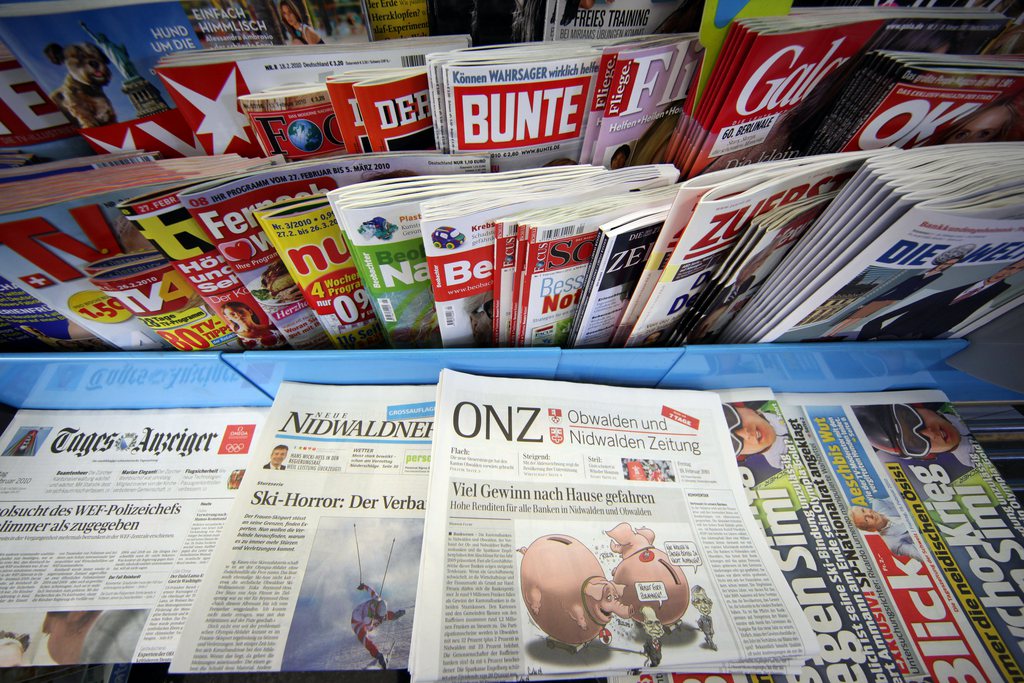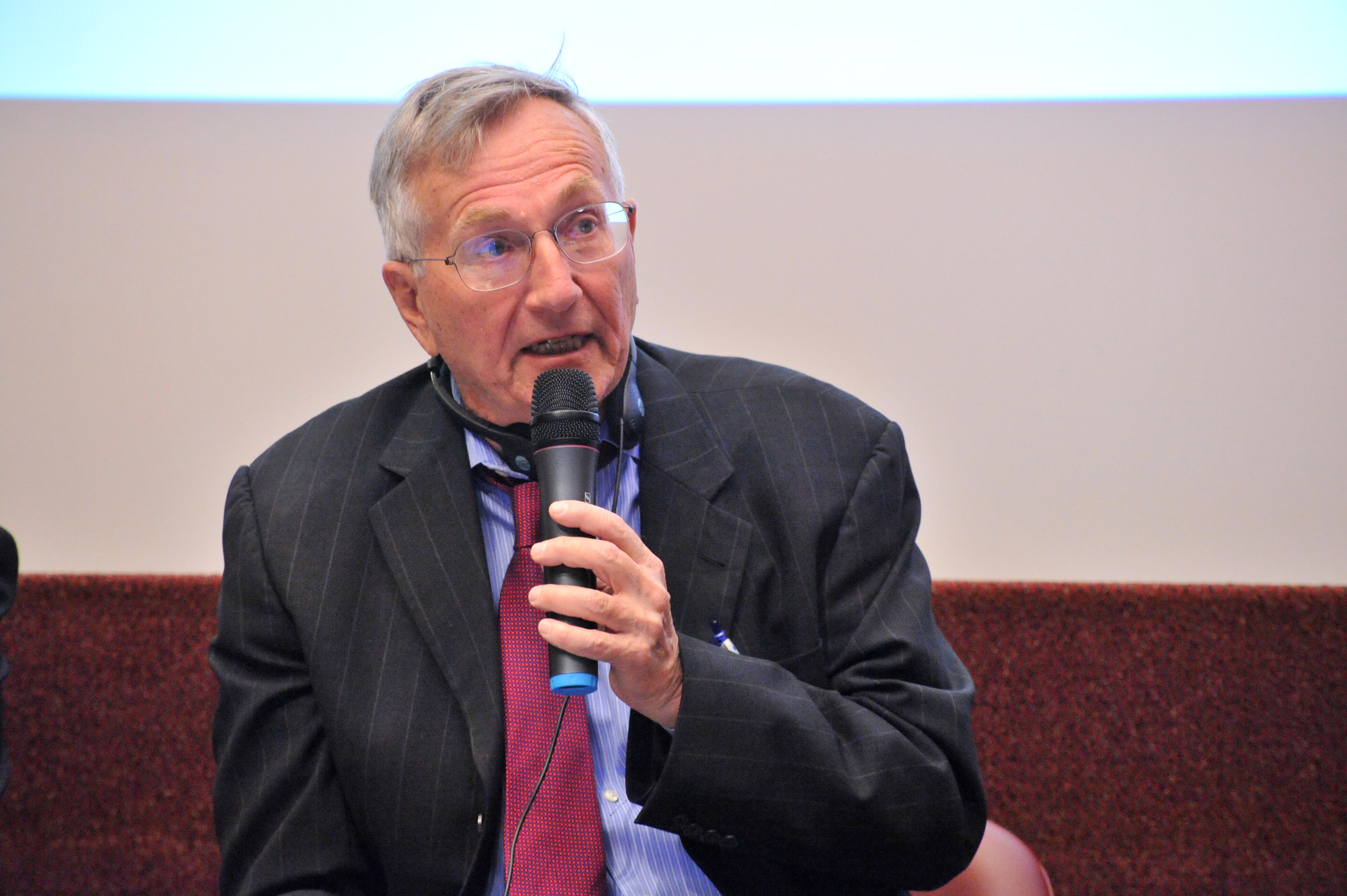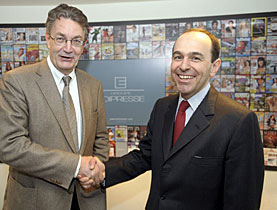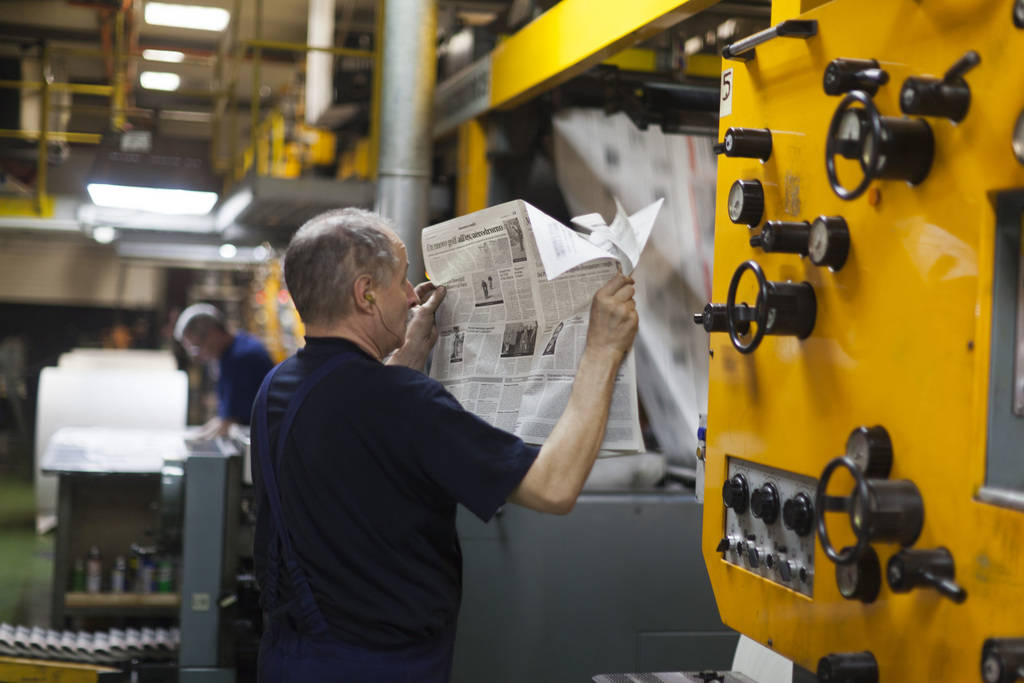‘Radically local’ paper reports good news

As newspaper circulation continues to fall in Europe and the United States, swissinfo.ch visits a “micropaper” in an Alpine town which is making money with multi-platform local news.
“Why should we report about Barack Obama?” Urs Gossweiler asked. “We don’t. Our users are certainly interested in Obama, but for that they have other sources. We want to bring them what they expect from the Jungfrau Zeitung: local content.”
Gossweiler is publisher of the Jungfrau Zeitung, an online newspaper with a twice-weekly print edition, which describes itself as “radically local”.
“This means we’re concentrated on a local market – regarding both users and content. A lot of newspapers have a local market but they think they are the only source and have to bring news from all over the world to local people,” he said at the paper’s offices in Interlaken, one of Switzerland’s top tourist resorts.
“That’s not true anymore. All our users have every source in the world, so they can go directly to CNN, the New York Times or a large German paper like the Süddeutsche Zeitung or Der Spiegel.”
The Jungfrau Zeitung targets the 45,000 inhabitants of the so-called “Microcosm Jungfrau”, the 1,230km2 of the 29-commune Interlaken-Oberhasli district (see link).
“It’s very important that you know exactly where your border is. Our customers are sitting in the valley here and we have to do business with them on any platform,” Gossweiler said.
In addition to a print circulation of just over 8,000, the paper has a strong digital and mobile distribution, with apps available for iPhones and iPads.
“We firmly believe micropapers like this are a [growing] trend – it’s like microbreweries for local beer!”
Relevance
Local journalism is frequently mocked for parochial non-stories – “WHITSTABLE MUM IN CUSTARD SHORTAGE” is an infamous headline from a local paper in southeast Britain – but Florian Wehrli, editor of the Jungfrau Zeitung, says local news is playing an increasing role in people’s lives.
“People want to know what’s happening around them. Even more with globalisation they come back to their own area, whether it’s for Schwingen [Swiss wrestling] or something else,” he said.
“All this traditional stuff is becoming more important – we can sense that.”
Wehrli explained how all the stories in the Jungfrau Zeitung have to be somehow linked to the area – “maybe something’s happening here, or somebody lives here or even was born here and has done something interesting abroad.”
No exceptions are made, even for major global events such as Fukushima, the Arab Spring or the US elections.
“We try to cover those events and connect them to our area, but if it’s not possible, we don’t do them.”
“Forum paper”
The colour layout is stylish and accessible and each edition’s 70 or so articles cover a balanced mix of politics (including analysis and editorials), economics, culture, “people” and – most popularly – sport.
One of last week’s editions, for example, covered recent commune meetings and a retiring bus driver but also a US Air Force plane that crashed in the area in 1946 and was now being slowly spat out by the Gauli Glacier – a story that made the international media.
“We don’t use news agencies because if something happens here, we’ll know about it better than any agency – that’s our job,” Wehrli said.
Journalist Bettina Bhend said they considered themselves a “forum paper”. “People living in the area can send in articles about their sports teams or whatever and we’ll look at them, edit them and make them fit into the newspaper.”
This user-generated content, which Bhend estimates makes up around half the content, can range from shop openings/closures or new road markings to a school play. In short, anything that is useful and/or interesting if you live in the region.
“What I like a lot is that the national newspapers ultimately write about the same thing – what’s happening in Bern, in parliament, what’s happening internationally – but here I can find the little stories: I can write about a craftsman who’s 95 and still works in his little shop,” she said.
“I like the little stories that are never talked about in the big newspapers.”
Challenges
Other people like them too. The paper received more than seven million page views in 2011, up from around 1.5 million in 2005. The number of individual users in the same period increased fivefold to 53,500 – more than the number of inhabitants in the target region.
The Jungfrau Zeitung, launched simultaneously on paper and online 12 years ago, was one of the first local papers in Switzerland to have a website. The app followed last year.
But succeeding in the local media market is not without challenges. The European newspaper industry is in trouble (see box).
For Gossweiler, the biggest challenge isn’t finding news but convincing advertisers they should use his platform rather than Google – “we can’t beat Google on the global level, but we can beat it in our region”.
“What’s been the main thing in our business for 200 years? The main thing is we bring an audience to advertisers. But it doesn’t matter whether this is on paper or in virtual reality.”
He adds, however, that the concept is “very difficult to duplicate”. Two years ago, he launched the ONZ, a similar paper for the small neighbouring cantons of Obwalden and Nidwalden, but a lack of subscribers meant it had to close in March of this year.
Gossweiler says the Jungfrau Zeitung makes money, but admits that whereas the website is going from strength to strength, the print edition – favoured by older people – is slowly losing readers.
“Our strategy is orientated to a situation where we do not have the paper anymore,” he said.
“In future I believe the platforms that will struggle will be those between local and global. I believe in local information on the one side and global information on the other – regional concepts will have problems.”
The Jungfrau Zeitung was founded in 2000. The paper and the website were launched at the same time. The offices are in Interlaken.
The paper appears in selected kiosks in the Jungfrau Region every Tuesday and Friday and costs SFr2.50 ($2.70). In 2011, circulation was just over 8,000.
The Jungfrau Zeitung reaches 60,000 online users every month and around 20,000 readers every print edition.
The paper employs eight full-time journalists.
At the end of November, the World Association of Newspapers and News Publishers (WAN-IFRA) published the 2012 edition of World Press Trends. The main findings:
Global newspaper circulation increased by 1.1 per cent in 2011, with growth in Asian markets offsetting losses elsewhere in the world.
Circulation rose 3.5 per cent in Asia and 4.8 per cent in the Middle East and North Africa. However, it fell 3.4 per cent in Europe, 3.3 per cent in Latin America and 4.3 per cent in North America. Australian circulation was stable.
Scandinavian countries boasted the highest readership of newspapers per capita.
More than 2.5 billion people read a printed newspaper at least once a week; 600 million read papers online and 500 million read both print and online editions.
The report also said that while digital platforms were helping newspapers increase their audiences, they were not providing the revenues necessary to sufficiently support them.
Print provides the vast majority of newspaper company revenues, with circulation alone accounting for half of sales. The global newspaper industry overall generated $200 billion (SFr186 billion) in revenues.

In compliance with the JTI standards
More: SWI swissinfo.ch certified by the Journalism Trust Initiative













You can find an overview of ongoing debates with our journalists here . Please join us!
If you want to start a conversation about a topic raised in this article or want to report factual errors, email us at english@swissinfo.ch.